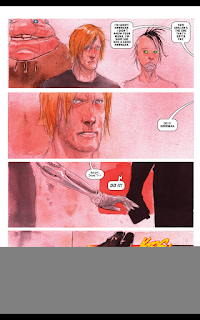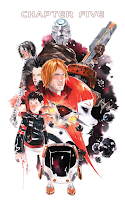Get the Truth by Philip Houston, Michael Floyd and Susan Carnicero
, 13 July 2018
Unlike Spy the Lie, by the same authors, Get the Truth is not as much as how to spot a lie but what and how to do to extract the truth from the person who is lying and might want or not want to confess. Or in any interpersonal exchange where two sides have conflicting agendas. It’s about the process of exerting influence to elicit truthful information from a person who has a reason to want to withhold it.
This book is not a learn-how sort of book as much as see-how-we-do-it sort of book. However, readers will learn many things about interviewing, interrogation and negotiation because of the author's long years of expertise doing what they do and, at this stage, everything they do it appears natural, genuine and easy.
The book per se finishes about half way.
The first appendix by Peter Romary, has 13 short chapters, which elaborate on the principles on which the authors' system relies, which can be applied to everyday life. Those principles of persuasion were revealed long ago by Cialdini's classic book on influence and persuasion, mostly based on how to exploit human biases to get what we want: optimism bias, confirmation bias, the power of liking somebody and wanting to be liked, the consistency bias, the power of sharing experiences and bonding, the principle of reciprocity, among others. If you have read the classic by Ciadini, you will find that what Romary says is basically Cialdini applied to specific contexts. If you have never heard or read Cialdini's classic, this is a great approach to the principles on which persuasion, the effective one, feeds. In any way, they are useful because sometimes those principles can be used against us or we can be blind-sided by them. This appendix also includes a discussion of the five states of successful negotiation, which I found really helpful for daily life, with great advice about being fair, non-confrontational, respectful and sincere. It also advises on how to deal with the cognitive dissonance of criminals and untruthful people by keeping them in short-thinking mode, and using rationalisation, minimalisation and socialisation, and by setting a pace that is slow but steady with non-coercive questions, then the other person will 'cross the bridge' to your side when they are ready; not being judgemental, being kind and friendly, speaking calmly. Understanding what motivates one person, most wants or fears, make the other person feel comfortable and not judged, genuinely consider all viewpoints and don't be a win-at-all-costs person.
The first appendix by Peter Romary, has 13 short chapters, which elaborate on the principles on which the authors' system relies, which can be applied to everyday life. Those principles of persuasion were revealed long ago by Cialdini's classic book on influence and persuasion, mostly based on how to exploit human biases to get what we want: optimism bias, confirmation bias, the power of liking somebody and wanting to be liked, the consistency bias, the power of sharing experiences and bonding, the principle of reciprocity, among others. If you have read the classic by Ciadini, you will find that what Romary says is basically Cialdini applied to specific contexts. If you have never heard or read Cialdini's classic, this is a great approach to the principles on which persuasion, the effective one, feeds. In any way, they are useful because sometimes those principles can be used against us or we can be blind-sided by them. This appendix also includes a discussion of the five states of successful negotiation, which I found really helpful for daily life, with great advice about being fair, non-confrontational, respectful and sincere. It also advises on how to deal with the cognitive dissonance of criminals and untruthful people by keeping them in short-thinking mode, and using rationalisation, minimalisation and socialisation, and by setting a pace that is slow but steady with non-coercive questions, then the other person will 'cross the bridge' to your side when they are ready; not being judgemental, being kind and friendly, speaking calmly. Understanding what motivates one person, most wants or fears, make the other person feel comfortable and not judged, genuinely consider all viewpoints and don't be a win-at-all-costs person.
By taking a noncoercive, ethical approach, we stand a much better chance of getting the truth. And we’re far better equipped to create lasting relationships that can help us attain our personal and professional goals. (p. 213).
The second appendix, also by Romary, is just a reminder of how important is preparation and practice to get good at getting the truth. You need to understand the background (ideological, religious, political) of the person you are interrogating, or negotiating with. Romary mentions where to get information about anybody, both in public and private records and online media. Most of what he says is simplistic and nothing you don't already know, and nothing that deserves an appendix.
The third appendix is a transcript of the actual interview with O.J. Simpson, whose interrogation is mentioned and used throughout the book to exemplify good and bad interrogation techniques.
BIG YAIS
A good summary of some of the points discussed in the book can be found in the boxed summary 'lessons we have learned', pp. 144-148.
One of the main points that the authors make is that to get a confession you don't need to be coercitive, aggressive, violent or use torture, because that would hardly get you the truth. Most of chapter 13, the elefant in the room, is full of great sound advise and makes great points on why does not work, and where do you draw the line.
The book also has a glossary and an subject index, which, to my delight, is hyperlinked.
DOWNSIDES
A good summary of some of the points discussed in the book can be found in the boxed summary 'lessons we have learned', pp. 144-148.
One of the main points that the authors make is that to get a confession you don't need to be coercitive, aggressive, violent or use torture, because that would hardly get you the truth. Most of chapter 13, the elefant in the room, is full of great sound advise and makes great points on why does not work, and where do you draw the line.
The book also has a glossary and an subject index, which, to my delight, is hyperlinked.
DOWNSIDES
If you have read Spy the Lie, you will find that some of the examples, real-life cases, described there are also repeated here. They are lovely to read, but I would have appreciated them bringing something new to the table.
Although the authors advise being genuine and sincere, they advise something I consider unethical. For example,
But coming across as sincere is absolutely essential, and accomplishing that sometimes forces you to lie, especially when feeling any sense of genuine sympathy is simply impossible. (p. 46).Also, in the first appendix, Romary says :
Conveying a fictitious account of some dimension of your background or experience, in order to demonstrate sincerity and empathy in an elicitation situation, can be an effective means of creating a bond that will encourage a person to reveal the truthful information you’re seeking. (p. 199).







































